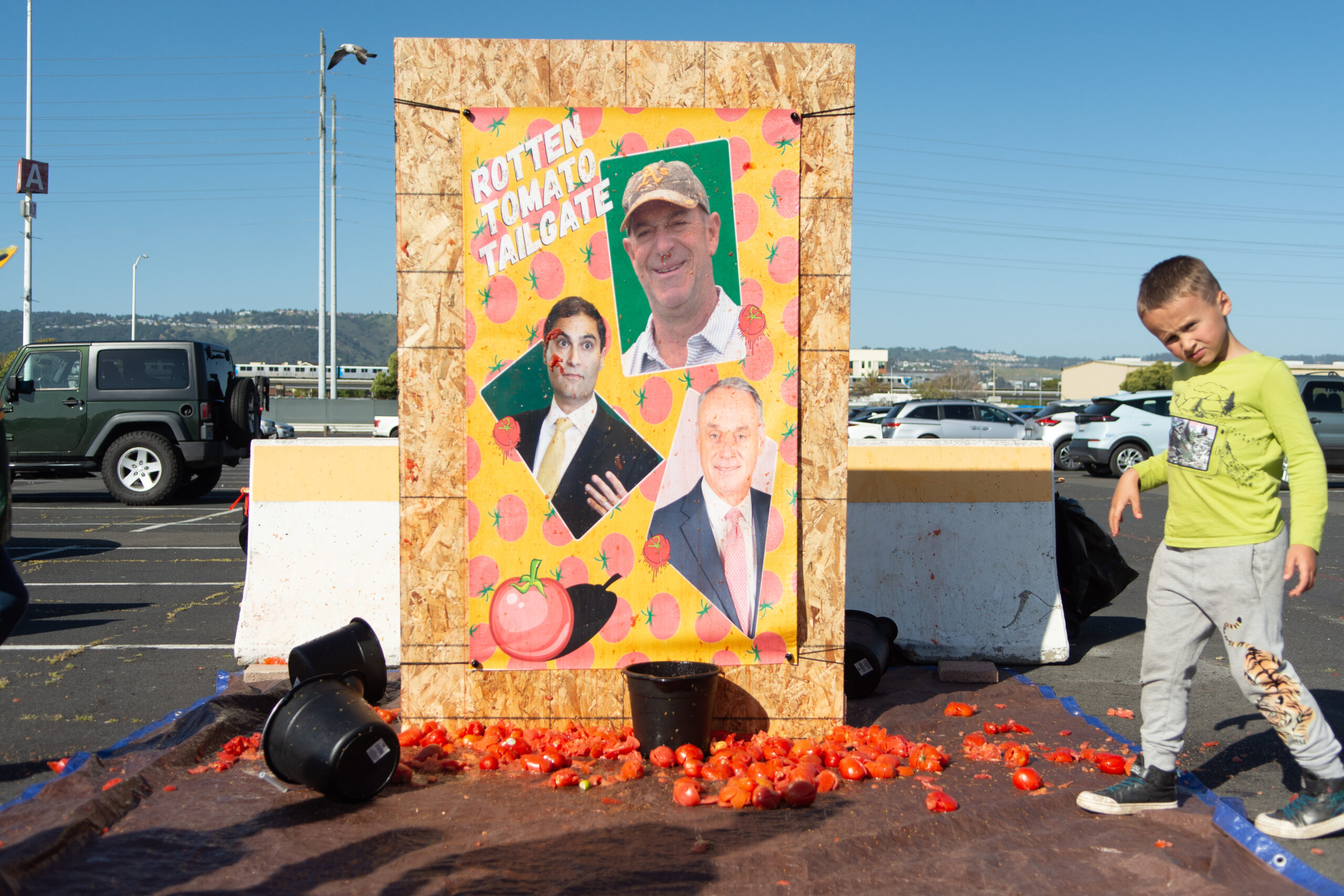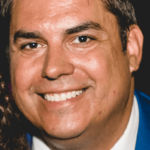Oakland fan: Nevada-Fisher partnership doesn’t makes sense, would end disastrously

The Oakland A’s frantic last-minute dash for stadium cash is approaching a climax. The A’s and Nevada lawmakers reached an agreement to funnel $380 million to the heir of the Gap fortune and team owner, John Fisher, to build the smallest ballpark in baseball for a team he’s driven into the ground.
This is a deal that makes sense for nobody and will end disastrously for everybody.
Take it from a lifelong Oakland A’s fan, this is not a team owner Las Vegans should trust, let alone offer residency on the Strip. If the fact that Fisher will not own the stadium nor own the land is not a dead giveaway that he is hesitant to invest in this team, his stewardship of the franchise should quell any doubts.
For years, observers blamed relocation rumors on Oakland fans. Accepted is the flawed argument that the A’s are a “small market team” without the resources to re-sign its star players or lure marquee free agents. Under the leadership of the Haas family, the A’s fielded competitive teams, including three straight World Series appearances and the 1989 title, placing third in league attendance that year.
When Fisher, with managing partner Lew Wolff, purchased the team for $180 million in 2005, they constituted the third richest ownership group in all of baseball. Yet despite that tremendous wealth, the A’s never re-signed a player to a long-term contract in the past 18 years. Not one. In fact, the A’s remain one of only three franchises to have never signed a player to a $100 million contract. Ever. Instead, fan favorite star players in Oakland would be regularly shipped out for cheaper prospects or allowed to walk in free agency.
Payroll under Fisher, with a couple of exceptions, regularly sits between 26th and 30th in the league. This season, the A’s are more than $100 million below the league average.
That’s not a team owner who is trying to win. Former A’s stars Matt Chapman and Chris Bassitt both agree. Team ownership didn’t share the same goal as them. They wanted to win. Fisher did not.
A’s team president Dave Kaval tried to sell Oakland on claims that a new ballpark would facilitate a better on-field product and greater attendance. This is simply not true and we know it is not true because there’s another sports franchise owned by Fisher and fronted by Kaval that made the same bogus claims eight years ago.
In 2015, Fisher’s San Jose Earthquakes secured a new Major League Soccer stadium. Since it opened, Earthquakes payroll ranks middle of the pack or worse and their best year they finished 12th overall without a single winning season. Their attendance is frequently below the league average or considerably worse.
This is what Las Vegas can expect when Fisher’s A’s plant their roots in a rented ballpark.
Let’s start with the seemingly haphazard approach the A’s have undertaken in Nevada: “Binding agreements” that aren’t so binding. No traffic studies. Promoting a poll that was outdated before it was even released. Renderings depicting a ballpark much larger than 9 acres. Yet they are days away from securing $380 million in public financing without a ballpark site selected.
MLB Commissioner Rob Manfred, while suggesting a relocation vote could come as soon as next month, admitted that Fisher hasn’t even started the studies on potential fan interest and corporate sponsorships — required steps as part of the baseball’s internal relocation process.
Everybody seems to be in such a hurry. But, rest assured, taxpayers, it will work out swell for you. Honest.
To sell lawmakers on public financing, the A’s claims of 2.5 million attendance is so absurdly overly optimistic that it strains credulity. In a 30,000-seat capacity ballpark, it would require the dead last A’s to sell out 83 games a year. (There are only 81 home games in a season.)
“It could host other events, too.” But where would you slot this dime store stadium as a concert venue among Allegiant Stadium, T-Mobile Arena, Thomas and Mack Center, the upcoming MSG Sphere, a proposed NBA-ready arena on the Strip and a slew of other casino event venues? It’s a crowded slate to bank on significant attendance to make up for those sparsely attended Tuesday through Thursday series against the Guardians.
Not only would the A’s continue to fail on the field and in ticket sales, it is almost impossible to conjure up a comically worst fit for Las Vegas — a city known for its extravagance and world-class entertainment — than John Fisher and his clearance rack baseball operation.
Tourists know Las Vegas for its over-the-top showmanship, opulence, bright lights and glitzy promotion. The A’s, whose only marketing campaign under Fisher was “Rooted in Oakland,” actively alienated fans by nixing a popular season ticket program. Fisher is effectively a recluse who rarely ever attends games and hasn’t said a word publicly during this process. But he’s no Howard Hughes. Hughes actually achieved business success. Fisher was merely born into it.
An expansion team created in the city’s own image and backed by a local ownership group with Las Vegas’ financial and marketing chops would be a fantastic success for the city and the league. The Golden Knights offer a proof of concept. Consider the alternative: the interloper Raiders. Attend any Raiders home game and you would be forgiven if you forgot you were in Las Vegas. The overwhelming force of fans for the opposing team has been a point of friction since the lifting of COVID measures. It’s such a problem that even team owner Mark Davis is “embarrassed” by the situation. At least the Raiders’ California fans travel.
For Major League Baseball, they will cannibalize a promising expansion market with a third-rate operation and surrender a $500 million relocation fee for the privilege. MLB could make a glamorous arrival on the Strip with an expansion franchise and a stadium crafted to Las Vegas standards. Instead, Fisher will slink into town with discount lodging crammed into the southeast corner of the Tropicana lot and reportedly face the airport like a seedy motel.
For the A’s, as they leave the sixth largest media market, they will exchange their position as the only game in town to one of just a myriad of entertainment options. If the A’s supposedly struggled to compete against the Giants across the Bay, good luck on the Strip. And when the novelty of a new ballpark wears off, they will struggle to fill the smallest ballpark in the 42nd largest media market and will own nothing but last place.
For Nevada, the biggest risks rest with the taxpayers. The A’s abandoned their promise of a “privately financed ballpark” and now seek a publicly owned facility with $380 million in public financing. When the A’s fail to meet their ridiculous attendance projections and the math on the bonds no longer pencils out, it will be Nevada’s taxpayers left covering Fisher’s losses. Responsibility for the inevitable repairs to this government-owned facility is unclear. MLB’s stern warning to Milwaukee over $448 million in repairs to their government-owned ballpark suggests the League’s preference. But rest assured, Fisher reportedly will collect most of the ballpark revenues. Isn’t that nice?
With each passing day, everything makes less sense than it did the day before.
Rob Manfred once said that leaving Oakland would be looked upon years later as a “mistake.” By fleeing out the door like this, Major League Baseball is going to find out just how much he was right.
Matt Ortega is the Bay Area-based web developer behind NoNevadaMoney.com aimed at organizing Nevadans opposed to public financing of an A’s ballpark to contact their lawmakers.
